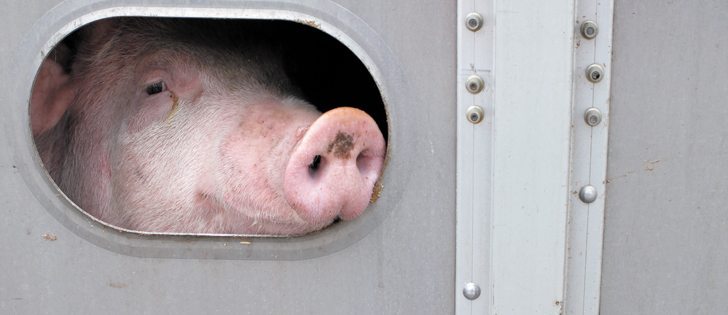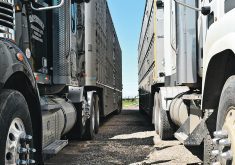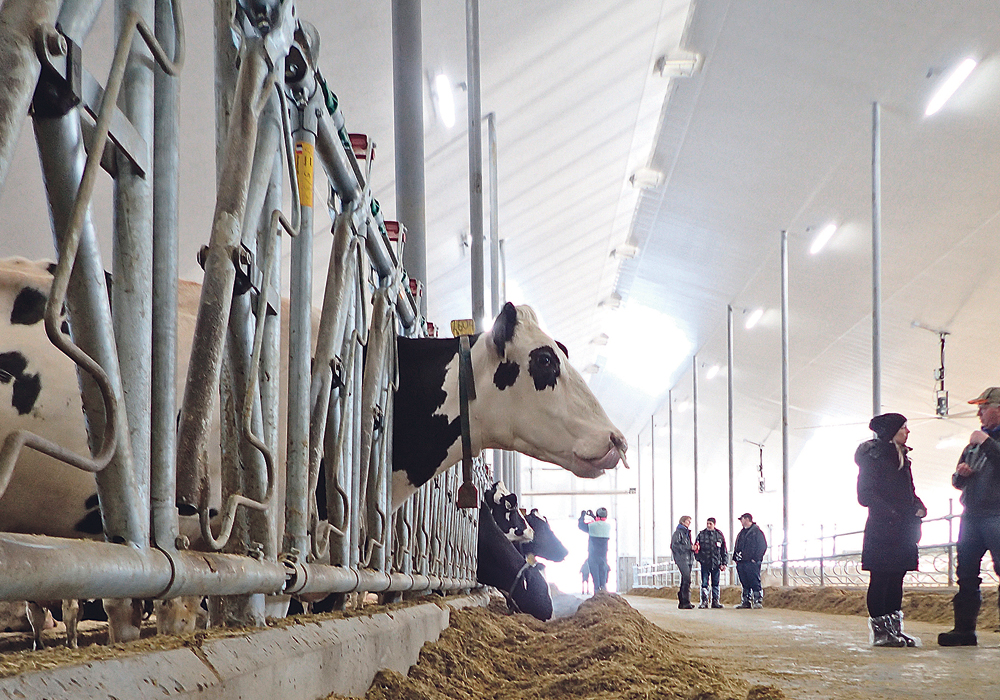Muscle trauma, fatigue can cause animals to be unable to stand or walk after transport to slaughter plants
MANHATTAN, Kan. — The livestock industry is starting to pay more attention to the issue of fatigued animals arriving at slaughter plants.
“Mobility of cattle at slaughter facilities has gained a lot of focus over the last few years,” said Jacob Hagenmaier, a veterinarian and PhD candidate at Kansas State University.
Some have suggested over-use of beta agonists because cattle were showing up with sloughed off hooves and some had to be euthanized, he said at the International Beef Welfare Symposium held June 8-10 in Manhattan, Kansas.
Read Also

VIDEO: Ag in Motion documentary launches second season
The second season of the the Western Producer’s documentary series about Ag in Motion launched Oct. 8.
As a result, zilpaterol, which Merck sells under the brand name Zilmax, was suspended from markets in the United States and Canada in 2013.
Guy Loneragen from Texas A & M University linked thousands of feedlot deaths to the product, although the manufacturer rejected his claims.
However, while beta agonists are suspected, there are also other factors.
The hog industry faced fatigued pig syndrome from 1992-2000 with a steady increase in transport losses in hogs. They suffered no obvious trauma or disease but refused to stand or walk. Tests on heavily muscled hogs displaying fatigue showed blood abnormalities and increased respiratory rates.
It was suspected cattle were suffering from the same syndrome, and research that started in 2014 is investigating connections.
Researchers tested ractopamine but found aggressive handling had a major impact on cattle.
“Aggressive handling increased stress hormones and caused acute metabolic acidosis,” he said.
Metabolic acidosis happens when energy demands are high and depletes oxygen. Earlier studies found potassium levels can increase 40 percent, which affects the heart.
“It doesn’t take much before we really start altering the physiology of the animal,” he said.
Cattle are not athletes. They should be moved slowly and should not have to trot. They have 30 percent lung capacity of a horse but a greater oxygen requirement.
Muscle trauma and fatigue may also be linked to transportation. Cattle that are ready for shipping may be left standing in a trailer or on concrete for hours at a time. They may also be subjected to extreme weather.
“We are only at the tip of the iceberg with fatigued cattle syndrome. There is still so much to learn,” Hagenmaier said.
A 2009 paper from Colorado State University researcher Temple Grandin outlined factors connected to fatigued hog syndrome:
- Rough handling of pigs and excessive electric prod use can increase the number of downers.
- Overloaded trucks can contribute to downers.
- Poor leg conformation, especially among lean hybrid pigs, may be to blame. Genetic changes for better foot and leg structure have improved problems such as collapsed ankles, post leggedness and straight hooves. Pigs with good legs and feet are less likely to be lame.
- Indiscriminate use of ractopamine (Paylean) contributed to fatigued pig syndrome.
- Porcine stress syndrome is a genetic condition that contributes to downer and death losses. However, Grandin said there are differences between a PSS pig and a fatigued one. A PSS pig is not able to walk and will quiver and rapidly grunt with an open mouth. A fatigued pig lies down and is cool to the touch. They appear to have no energy but after some rest may be willing to move.


















